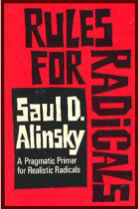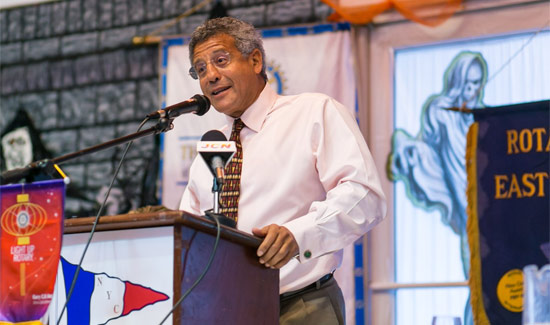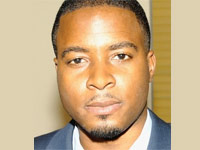Today, just months before a Presidential election, the United States is at a historical turning point that is complicated by a very anemic recovery from the Great Depression of 2008 and a very polarizing election. One wonders “What’s new?” and “Why now?”
After its independence in 1776 the country uniquely evolved from English roots to become by 1950 the dominant World power; and its role in ending the Nazi and Stalinist threats to peace was a source of great pride. However, since then it has been threatened from within. This memo will cover those events from the college student protests of the 1960s to the New Socialism of today.
The New Left
Yes…the United States did become the dominant industrial and military power. But…
 The most important single transformative event since then was the Vietnamese War that started in 1945 when Ho Chi Minh, a Stalinist revolutionary, formed the Democratic Republic of Vietnam (North Vietnam) within what was formerly “French Indochina”. Throughout his life his objective was a united, communist Vietnam…a country free of 100-years of French colonial rule, a Japanese occupation, a “re- occupation” by France and the new Republic of South Vietnam.
The most important single transformative event since then was the Vietnamese War that started in 1945 when Ho Chi Minh, a Stalinist revolutionary, formed the Democratic Republic of Vietnam (North Vietnam) within what was formerly “French Indochina”. Throughout his life his objective was a united, communist Vietnam…a country free of 100-years of French colonial rule, a Japanese occupation, a “re- occupation” by France and the new Republic of South Vietnam.
Unfortunately for the U.S. effort to contain the spread of Stalinist Communism, the new Republic of South Vietnam was a Buddhist country governed by a corrupt and unpopular minority. Unlike the Korean War of 1951-1954, this one was a 20-year costly war of attrition. While the U.S. may have won the war on the battle front, it lost the public support that its “Communism Containment” policy needed; and the dissatisfaction with it at home produced a radical “New Left” in American politics.
Non-Reform Reform & Alinsky’s Rules
The New Left has its origins in the work at Columbia University of social scientist C. Wright Mills from 1946 to 1962. He is credited with calling this initiative the “New Left”.
But…it was Richard Cloward and his wife Frances Fox Priven at Columbia who in 1966 formulated a strategy to “bring down the American economy…by overloading the U.S. welfare system in order to precipitate a crisis that would lead to…major [socialist] reform.”
Andre Gorz, the prominent European social philosopher of the period, called this a…
“Non-Reform Reform, a form of guerilla socialism”, an indirect means to overthrow capitalism.”
 Saul D. Alinsky wrote Rules for Radicals: A Pragmatic Primer for Realistic Radicals in 1971; it became the “veritable blue- print for the revolution he called “Hope and Change”.
Saul D. Alinsky wrote Rules for Radicals: A Pragmatic Primer for Realistic Radicals in 1971; it became the “veritable blue- print for the revolution he called “Hope and Change”.
In the first chapter he states “this book is for those who want to change the world from what it is to what they believe it should be.
“The Prince was written by Machiavelli for the Haves on how to hold power. Rules for Radicals is written for the Have-Nots on how to take it away…The organizer, the agent of change, works inside the system, among not only ‘the Have-Nots’ but also the middle class, the ‘Have-a-Little, Want More’ ”.
Alinsky dedicates Rules to two individuals and to Lucifer, the Devil cited in the Bible, the one who “deceives the whole world (Rev. 12:9)”. One critic relates this to his tenth rule, the ethics of means and ends,
“you do what you can with what you have and clothe it with moral garments.”
 Alinsky contends that to win the war with capitalism, community organizers must employ “power tactics.” Alinsky uses the language of war and addresses his fellow Americans as “the enemy”. Apparently the working draft was titled Rules for Revolution rather than Rules for Radicals.
Alinsky contends that to win the war with capitalism, community organizers must employ “power tactics.” Alinsky uses the language of war and addresses his fellow Americans as “the enemy”. Apparently the working draft was titled Rules for Revolution rather than Rules for Radicals.
Students For a Democratic Society (“SDS”)
During the 1960s the SDS was the activist political opposition…loosely associated liberal, radical and marxist political movements of college students. They were “mostly white students that advocated democracy, civil rights, university reforms and the end of the military draft and the Viet Nam War.”
They believed that “the new agents of revolutionary change were young intellectuals”; and they argued that the Soviet Union was no longer the world center for proletarian revolution. Because of doctrinal differences the SDS expired in 1969.
But many of its estimated 100,000 members joined the credentialed elite that has since dominated academia, the law, the media and the governmental bureaucracy.
Extreme Violence
The Weather Underground, organized in 1969, was a clandestine revolutionary party seeking the violent over-throw of the U.S. Government. It conducted a campaign of bombings through the mid-1970s and declared a “State of War” against the U. S. government in response to President Johnson’s escalation of the war.
The Weathermen largely disintegrated after the peace accord in Vietnam. However, some of its leaders, like Bill Ayres, the un-convicted bomber of the Pentagon, are today embedded in the nations’ university faculties.
ACORN
Wade Rathke in the 1960s was a dropout from Williams College who joined the SDS to promote draft resistance. In 1970 he went to Little Rock, Arkansas, to found the Association of Community Organizations for Reform. At its peak ACORN had over 500,000 members and more than 1,200 neighborhood chapters in over 100 cities. Its purpose was to “unite welfare recipients, needy working people around issues such as unemployment, school lunches, Vietnam veterans rights and affordable housing.”
Non-Reform Reform & Affordable Housing
The first successful Non-Reform Reform was the exploitation of the Federal Housing program that began in 1938 and was intended to expand home mortgage lending. The timeline follows:
In 1977 a Democratic Congress and President Carter signed the Community Reinvestment Act (CRA) to encourage commercial banks to help meet the credit needs of borrowers…particularly low- and moderate-income neighborhoods.
In 1993 a Democratic Congress and President Clinton, dissatisfied with the the levels of the new home mortgage lending actually achieved, instigated new regulations that would…
1. Increase the number and aggregate amount of loans to small businesses and to low- and moderate- income borrowers for home loans.
2. BUT…a “coercive deal” was needed.
IF the Banks “got rid of objective color-blind criteria on home mortgage loans, like the size of the mortgage payment relative to credit history, savings history and income verification”,
THEN the Government would approve their merger and new business initiatives; and
ALSO ‘credit-counseling’ programs would be taken as evidence of an applicant’s ability to manage debt, and the banks would pay substantial fees directly to ACORN to provide such “credit- counseling services”.
3. Authorize the securitization (or packaging) of numerous subprime mortgages into mortgage-backed securities that then could be sold around the world as if they were U.S. Government debt.
In 1995 Fannie Mae was authorized to buy subprime mortgages where the borrower had “a poor credit record and/or very low income compared to loan size.” Within two years Fannie was offering to buy mortgages that had only 3% down.
 Fannie technically was a private enterprise and it set aggressive annual sales goals and awarded its top executives salaries and bonuses tied to those goals without ever producing audited financial statements. This produced an epic struggle over the disclosure of its financial condition.
Fannie technically was a private enterprise and it set aggressive annual sales goals and awarded its top executives salaries and bonuses tied to those goals without ever producing audited financial statements. This produced an epic struggle over the disclosure of its financial condition.
Between 1996-1999 ACORN was a particularly aggressive participant in this process…especially in Chicago where there was a virtual explosion in sub-prime lending.
In 2003 President George Bush proposed a regulatory overhaul that would have brought Fannie Mac and Freddie Mac under a viable regulatory control. The Democrats in Congress blocked this initiative.
“Between 1994 and 2004, Fannie Mae executives improperly reported $10.6 billion of earnings while its Chief Executive Officer received over $90 million in compensation…its Vice Chairman $26 million…” And Fannie did not mark its mortgage portfolio to current market prices as required by Standard Accounting Practices. It would have been reported bankrupt if it had.
In 2004 the Finance Committees of both houses of Congress passed a resolution demanding full disclosure of the financial condition of Freddie and Fannie. And…
In 2005 a Rule of the Senate blocked that resolution from coming to the Senate floor for a vote. It needed just five Democratic votes to do so.
Senator Barack H. Obama (D-IL) joined the Senate and was among those supporting that Senate rule. This was no surprise since in 1995 he was a a legal advisor on an ACORN voter registration case and a lecturer at their leadership training center; and between 1995 and 2008 he was second only to Sen. Chris Dodd in receiving campaign funding from Fannie Mae executives and its Political Action Committee.
In 2006 housing prices adjusted for inflation peaked…up 78.1% in the 8 years from 1999; by 2012, 6- years later, the market lost that entire gain. For almost 3 decades prior to 1999 housing prices adjusted for inflation were stable…rising at roughly the annual inflation rate.
In September 2008 Lehman Brothers, a major player in the worldwide distribution of Mortgage Backed Securities failed and world financial markets froze.
The first half of the Cloward-Priven Non-Reform Reform Strategy ended and the second half began.
The New Socialism & Senator Barack Obama
The socialism of Russia after 1917 and Cuba after 1959 meant Government ownership of the physical factors of production by a totalitarian state. But the New Socialism of today works within a political democracy that it exploits.
In 1996 a minor progressive but short lived third party, the New Party, and ACORN of Chicago sponsored Barack H Obama in his successful 1996 run for the Illinois Senate. As Bart De Palma has written –
“For American socialism Barack Hussein Obama was a candidate who could convincingly misrepresent himself as a moderate pragmatist. He was thoroughly grounded in socialist ideology beginning in his childhood; Senator Obama was the consummate political chameleon, adept at concealing his radical past and incredibly disciplined in maintaining a nearly apolitical facade before the public. These talents and a fortuitously timed financial crisis enabled him to become the first socialist to win election as President of the United States.”
And then he did not let the crisis go to waste.
On March 23, 2010 President Obama signed the Patient Protection and Affordable Care Act, popularly known as Obamacare. This comprehensive health insurance reform act will roll out over four years and beyond, with most changes taking place by 2014. It was a mamouth 2,700 page proposal. Yet the Democratic leader of House confirmed on TV that she did not know what was in it…the most significant overhaul of the country’s healthcare system in 45 years..
In July 21, 2010 President Obama signed the monumental Dodd–Frank Wall Street Reform and Consumer Protection Act in record time, six months after the first hearings. Congress concluded that the real villains in the crisis were not the Federal Reserve, Fannie and Freddie nor Congress itself. Fannie and Freddie simply “followed rather than led Wall Street and other lenders in the rush for fool’s gold”; and they even named the bill after Chris Dodd and Barney Frank. For them the real villains were those bank presidents, security rating agencies and insurance companies who made a ton of money on the pursuit of a Socialist objective. In the end the Act created a bigger bureaucracy to manage the financial sector of the economy.
And the President pursued other socialist dreams…alternative energy, no drilling for oil on federal lands and offshore, less coal production, “nationalize” the auto companies, cancel the oil pipeline from Canada, etc.
Yes, Barack H. Obama is the first Socialist President of the United States.
His father, Barack Hussein Obama Sr., was a talented but tragic figure in post-independent Kenya. He attended Harvard to pursue a Ph.D. degree in Economics; but Harvard did not renew his U. S. student visa and that ended his Ph.D studies there.
In contrast Barack H. Obama Jr. got a Law degree from Harvard and was President of the prestigious Law Review. And to date the President has far exceeded the dreams of his father.
His proven political skills are why his re-election is such a challenge to those seeking to reverse the socialist tide.
By: Ralph J Massey



